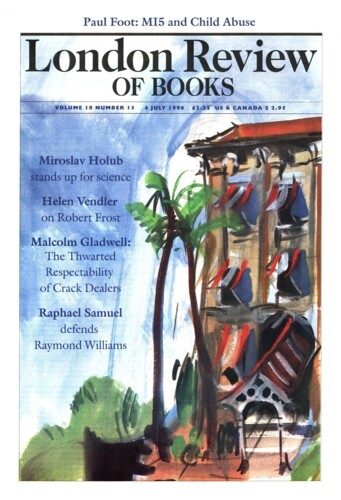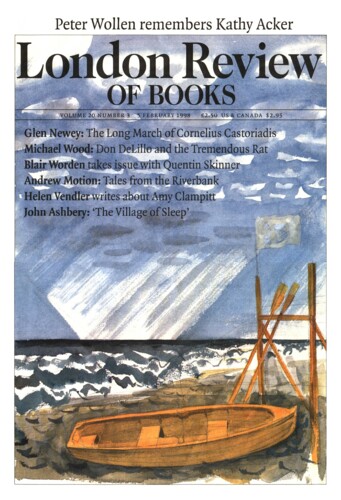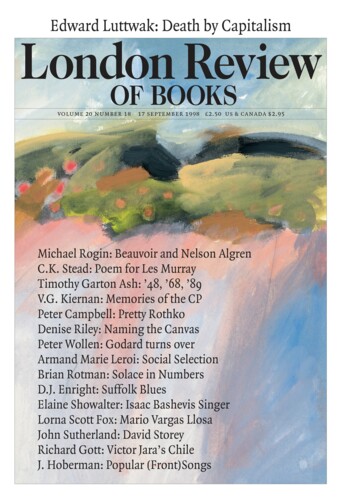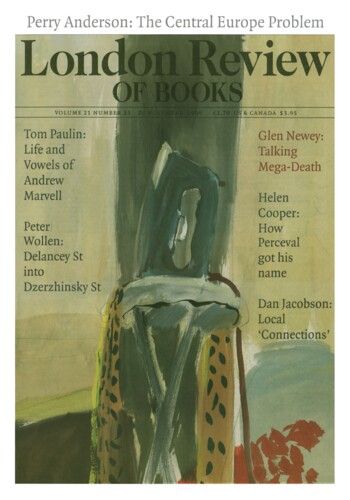The Same Old Solotaire
Peter Wollen, 4 July 1996
Yeats had no doubt how and when the fatal blow was struck. In his memoirs, he noted that ‘the condemnation of Wilde had brought ruin upon a whole movement in art and letters.’ Yeats himself was fortunate that the Celtic Revival, which ran in close tandem with Decadence, had special resources of its own. Two of the great iconic victims of the social purity movement, the repressive engine of Late Victorianism, were themselves Irish – Parnell and Wilde – and Yeats was able to incorporate their tragedies into his heroic narrative of Irish nationalism. Moreover, as Yeats himself pointed out, his own circle – the poets of the Rhymers’ Club – were too marginal to be significantly affected by the Wilde verdict. They only aimed to sell three hundred copies and wrote ‘for the smaller public that has knowledge and is undisturbed by popular feeling’.’





